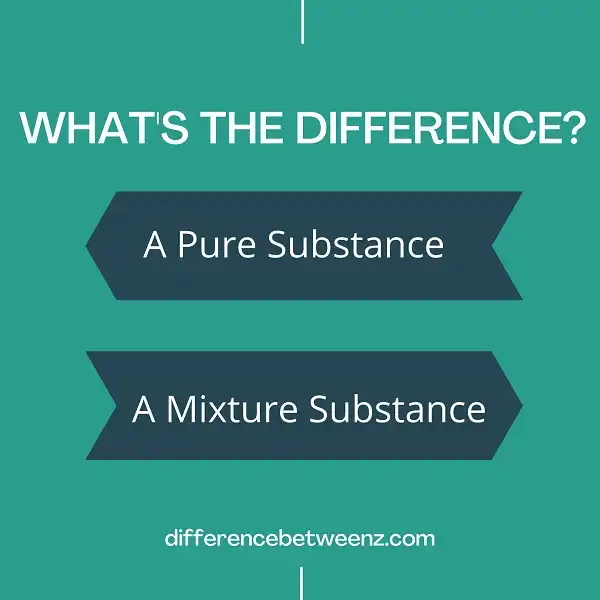In everyday conversation, the words “pure” and “mixture” are often used interchangeably. However, there is a big distinction between the two terms. A pure substance is one that is composed of only one type of particle, while a mixture is made up of two or more different types of particles. In this blog post, we will explore the differences between pure substances and mixtures in more detail. We will also discuss some common examples of each. Stay tuned!
What is a Pure Substance?
A pure substance is a material that is made of only one type of atom or molecule. All of the atoms or molecules in a pure substance have the same chemical properties. This means that a pure substance will always have the same physical and chemical properties, no matter how much of it you have. There are two main types of pure substances: elements and compounds. Elements are substances that cannot be broken down into any other substances, while compounds are substances that can be broken down into smaller units. Although both elements and compounds are pure substances, they have different physical and chemical properties. For example, elements are generally solids at room temperature, while compounds can be either solids, liquids, or gases. In addition, elements tend to be more reactive than compounds. As a result, a pure substance can either be an element or a compound, but it will always have a uniform composition.
What is a Mixture Substance?
A mixture substance is a material made up of two or more different substances that are physically combined. The individual substances in a mixture retain their own chemical properties and can be separated from each other by physical means, such as filtration or evaporation. In a heterogeneous mixture, the substances are not evenly distributed; for example, a salad is a heterogeneous mixture of greens, vegetables, and dressing. In a homogeneous mixture, the substances are evenly distributed; for example, saltwater is a homogeneous mixture of salt and water. It is important to note that a mixture is not a new substance; rather, it is a combination of existing substances. The concept of mixtures applies to both physical and chemical substances. For example, concrete is a heterogeneous mixture of cement, sand, stone, and water; the air is a homogeneous mixture of nitrogen, oxygen, and other gases. Mixtures are all around us in both the natural world and the man-made world.
Difference between a Pure Substance and a Mixture
A pure substance is a material that is made of a single element or a single compound. A mixture, on the other hand, is a material that is made up of two or more different substances. The key difference between a pure substance and a mixture is that a pure substance has a uniform composition throughout, whereas a mixture does not have a uniform composition. Another difference between a pure substance and a mixture is that a pure substance cannot be separated into its component parts by physical means, but a mixture can be separated into its component parts by physical means. For example, water is a pure substance because it consists of only water molecules. Saltwater, on the other hand, is a mixture because it consists of both salt and water molecules. Similarly, the air is a mixture because it consists of nitrogen, oxygen, and other gases. In conclusion, the key difference between a pure substance and a mixture is their composition; a pure substance has a uniform composition while a mixture does not have a uniform composition.
Conclusion
A pure substance is a single type of molecule, while a mixture contains two or more types of molecules. In order to be considered a pure substance, the molecules must be uniform in composition and properties. A mixture can be physically separated into its component parts, but a pure substance cannot. The difference between a pure substance and a mixture is an important distinction to make when considering chemical compositions.


